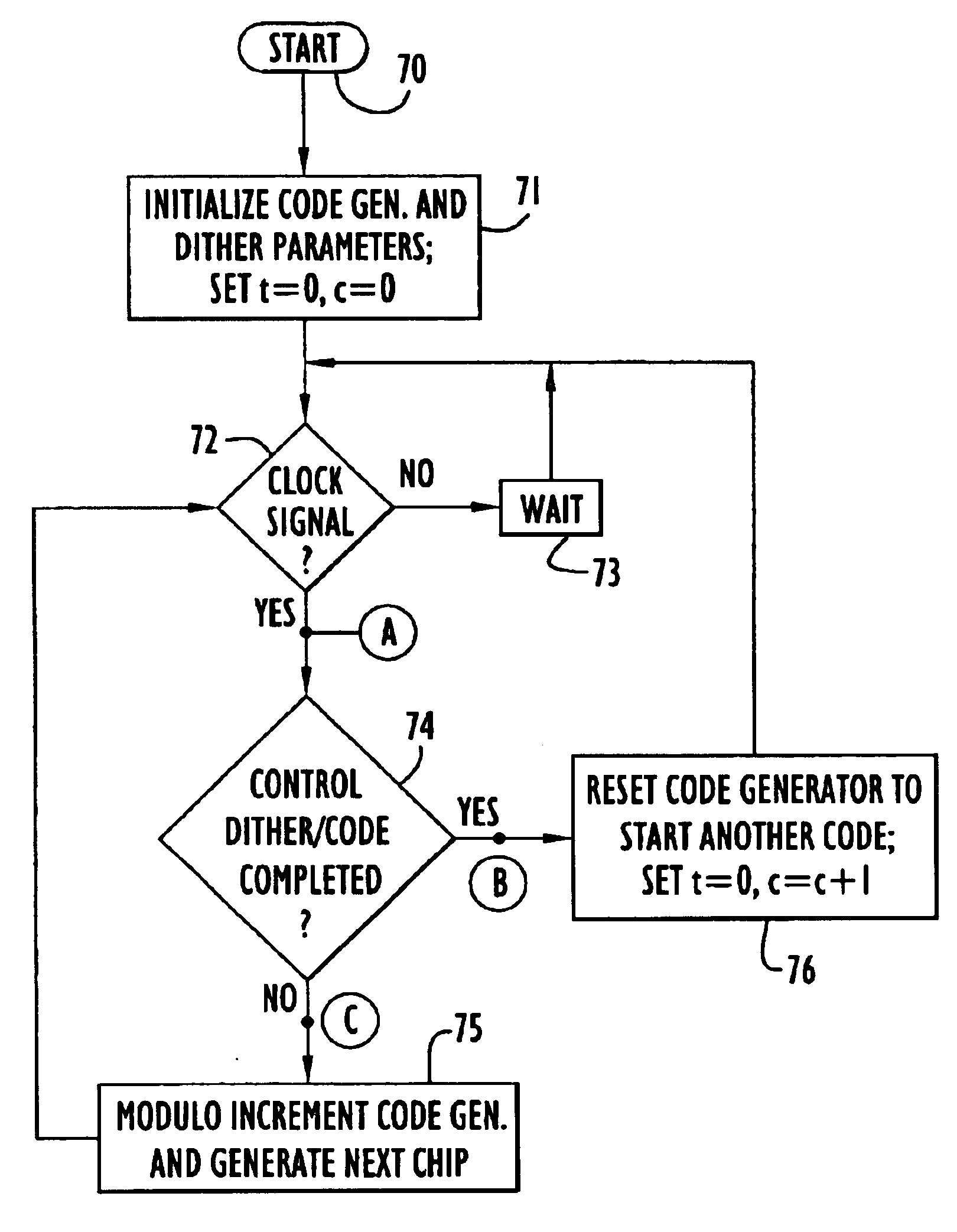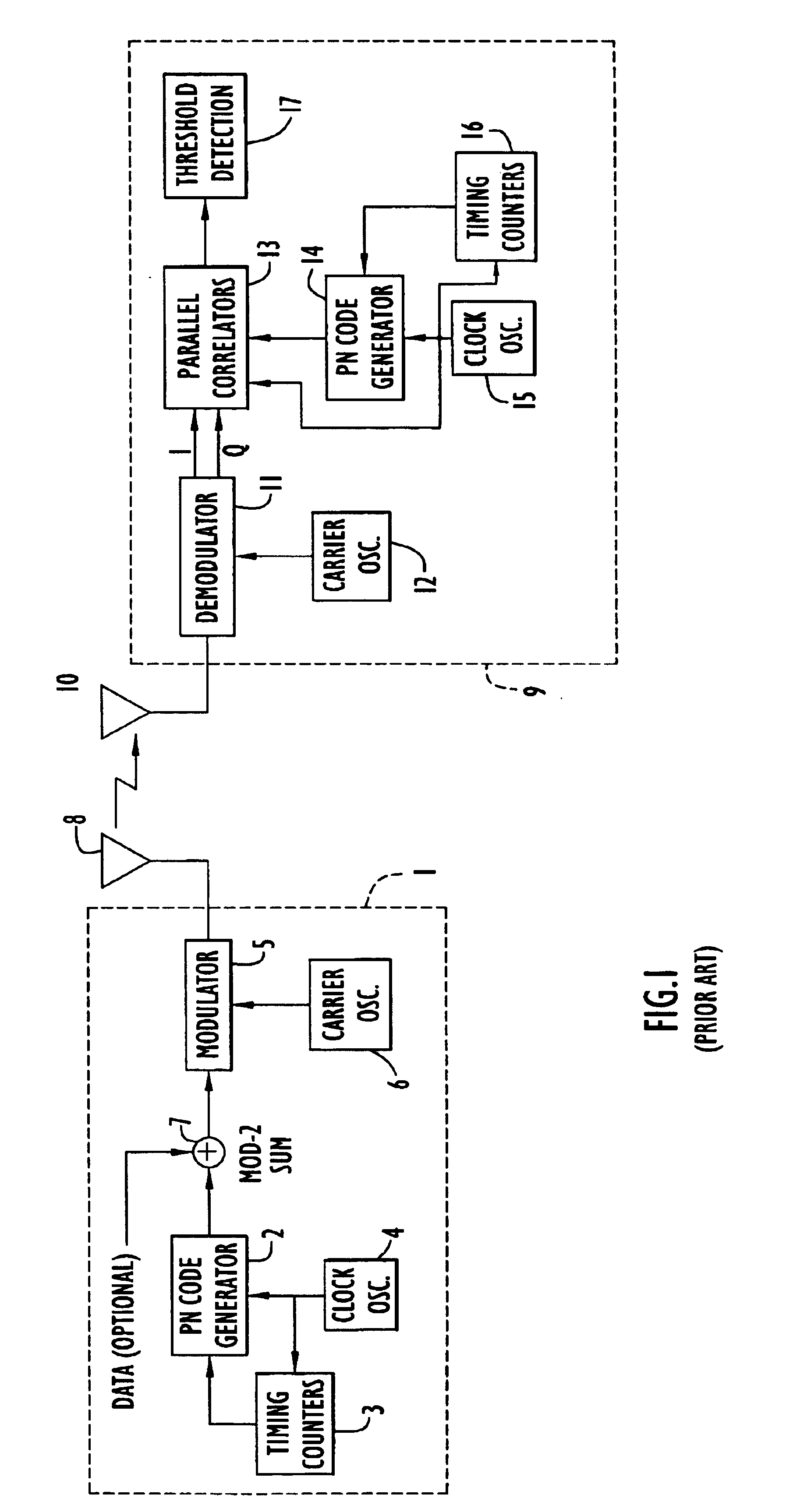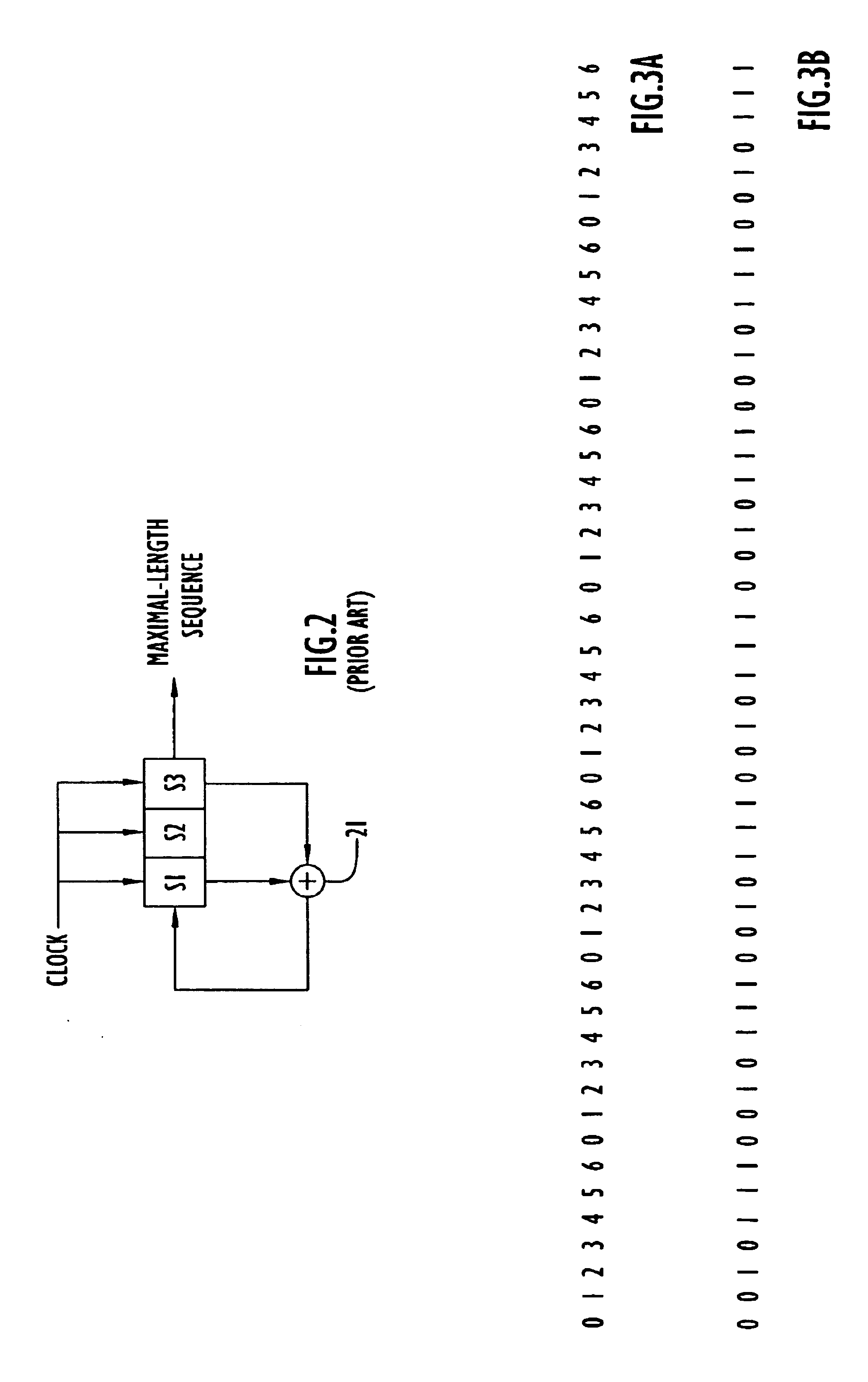Method and apparatus for generating and transmitting a stationary dither code
a technology of stationary dithering and code generation, applied in the field of data communication and timing systems, can solve the problems of difficult for a receiver to determine its phase, require an expensive, complex and unwieldy receiver, and set the correct time of day
- Summary
- Abstract
- Description
- Claims
- Application Information
AI Technical Summary
Benefits of technology
Problems solved by technology
Method used
Image
Examples
Embodiment Construction
Preferred embodiments according to the present invention are described below with reference to the above drawings, in which like reference numerals designate like components.
Overview
According to the present invention, a long code can be generated by using a reference code with good autocorrelation properties, such that a receiver can detect the long code without having to correlate each phase of the long code concurrently with parallel correlators, or over time over the entire period of the long code. Rather, the code can be quickly detected by using a reasonable number of correlators, similar to the number of correlators that would be used to detect the reference code. The long code is generated by repeating the reference code with a fixed pattern of phase variations called dither. Various types of dither can be used, as described below in detail. Also, certain methods described here generate optimal dither patterns where the autocorrelation of the long code is ideal if the autocor...
PUM
 Login to View More
Login to View More Abstract
Description
Claims
Application Information
 Login to View More
Login to View More - R&D
- Intellectual Property
- Life Sciences
- Materials
- Tech Scout
- Unparalleled Data Quality
- Higher Quality Content
- 60% Fewer Hallucinations
Browse by: Latest US Patents, China's latest patents, Technical Efficacy Thesaurus, Application Domain, Technology Topic, Popular Technical Reports.
© 2025 PatSnap. All rights reserved.Legal|Privacy policy|Modern Slavery Act Transparency Statement|Sitemap|About US| Contact US: help@patsnap.com



